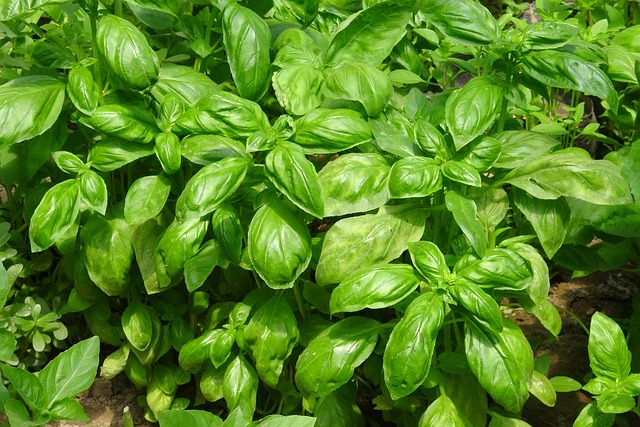A few years back, Chia seeds hit the market as the new superfood for the health-conscious consumer. I remember when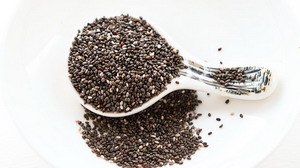 they first got marketed as a food product in this area. I had the same reaction as many other people that remember them from the early 80s when Chia Pets were a thing. “Oh how cute. Am I supposed to eat that thing?” But then I read about how the Aztec and Mayan people thrived on these tiny seeds and at the same time formed massive empires. Chia seeds contain good omega-3 oils (ALA), calcium, protein, and lots of fiber. I gave them a try and discovered that I enjoyed the slimy little fish egg bubbles of clear fiber that formed around each seed when they were soaked in water. I made smoothies with them and healthy puddings with coconut milk and stevia added to the seeds. They were entertaining but never became a cooking staple in our house. they first got marketed as a food product in this area. I had the same reaction as many other people that remember them from the early 80s when Chia Pets were a thing. “Oh how cute. Am I supposed to eat that thing?” But then I read about how the Aztec and Mayan people thrived on these tiny seeds and at the same time formed massive empires. Chia seeds contain good omega-3 oils (ALA), calcium, protein, and lots of fiber. I gave them a try and discovered that I enjoyed the slimy little fish egg bubbles of clear fiber that formed around each seed when they were soaked in water. I made smoothies with them and healthy puddings with coconut milk and stevia added to the seeds. They were entertaining but never became a cooking staple in our house.
Recently, I came across a bit of bad news about chia seeds. Although chia seeds do have several health properties such as reducing cholesterol, lowering blood glucose in response
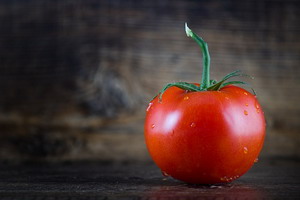 to meals, decreasing systemic inflammation, and lowering blood pressure, it does generate a severe reaction in some folks as a lectin toxin. Chia is an American plant, which means that it has not been a part of the genetic heritage of Western, African, or Asian peoples. Chia is like other American foods such as corn, tomato, potato, and many others. They were unknown to Europe, Asia, and Africa until the first plants were brought back by the Spanish invaders of the Americas about 500 years ago. While 500 years is not a lot of time genetically speaking to adapt to the unique plant toxins from a new continent, we’d do much better with plants that our ancestors have eaten for the last couple hundred thousand years. So, doctors have reported “allergic” type lectin reactions to chia seeds, which may be a problem for sensitive individuals. to meals, decreasing systemic inflammation, and lowering blood pressure, it does generate a severe reaction in some folks as a lectin toxin. Chia is an American plant, which means that it has not been a part of the genetic heritage of Western, African, or Asian peoples. Chia is like other American foods such as corn, tomato, potato, and many others. They were unknown to Europe, Asia, and Africa until the first plants were brought back by the Spanish invaders of the Americas about 500 years ago. While 500 years is not a lot of time genetically speaking to adapt to the unique plant toxins from a new continent, we’d do much better with plants that our ancestors have eaten for the last couple hundred thousand years. So, doctors have reported “allergic” type lectin reactions to chia seeds, which may be a problem for sensitive individuals.
This became an interest when I was recently introduced to basil seeds as a food source. They react in water just like chia seeds, forming a bubble of clear fiber slime around the seeds when wet. The fiber is primarily pectin and also the fiber we commonly use for making jams and jellies. We can use basil seeds for precisely that process. I make a simple fresh fruit refrigerator jam with just fruit, allulose, lemon juice, and basil seeds. No cooking is required as the basil seeds gel up nicely without any cooking needed. Although without the excessive sugar, cooking, and pressure sealing, this jam can not be left out on the shelf. It is kept in the fridge. The lemon juice is acidic enough to not only add flavorful tartness, but it also inhibits mold formation.
Basil has been a common food and medicine in Western cultures for thousands of years. It has many different medicinal essential oils which have been found to have many beneficial p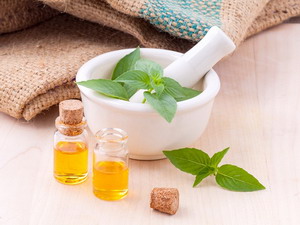 roperties: roperties:
Fights inflammation with anti-oxidants
Fights aging by blocking free-radicals
Fights cancer by protecting genes from mutation
Fights harmful bacterial growth
Fights viruses, yeasts, and molds
Fights depression by improving adrenal stress response
Fights platelet aggregation preventing blood clots
Fights fatty liver and detoxifies the liver
Fights inflammatory cytokines affecting the heart
Fights gut disease by promoting healthy bacteria
Fights diabetes by lowering blood glucose
Fights high blood pressure
Fights high cholesterol and triglycerides
Fights stomach worms/parasites
As you can see, basil does a lot of good stuff for the body. In particular, one variety of basil, known as holy basil, is a known adaptogen. Adaptogenic herbs are hormone regulat ors that raise low hormones and lower high ones. This adapts you to your environment and lowers your physiologic stress. Different parts of the plant are used for different purposes. ors that raise low hormones and lower high ones. This adapts you to your environment and lowers your physiologic stress. Different parts of the plant are used for different purposes.
The most obvious characteristic of basil seeds that grabs our attention is how adding just a tablespoon of these seeds to a cup of water will turn that water into a cup of jelly beads in about 15 minutes. You can drink it that way. Basil seeds are tradi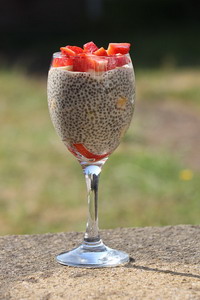 tionally added to many different beverages in different countries. I tried them in just water this morning. They don’t have much tast, beverages, e and I felt they had a pleasant feel going down the hatch. I noticed that they filled me up and took away my appetite. This could be a good thing. The pectin fiber that forms the gel is a wonderful food for the helpful bacteria in our gut. That gel not only feeds good bacteria but serves to slow down the absorption of sugars that are in your digestive tract. This helps prevent those pesky blood sugar spikes that cause so much damage in the body. Similarly, fiber also binds to the cholesterol dumped into the small intestine by the liver and gall bladder and carries it out of your system. It only takes 2 tablespoons of basil seeds a day to give you 15 grams of fiber. Just be sure to soak the seeds first, so they absorb water before they enter your gut. Otherwise, they will steal water from your gut which could make them form a blockage. Pre-soaked they are slippery little guys that will slide right on through your gut doing all their good stuff. tionally added to many different beverages in different countries. I tried them in just water this morning. They don’t have much tast, beverages, e and I felt they had a pleasant feel going down the hatch. I noticed that they filled me up and took away my appetite. This could be a good thing. The pectin fiber that forms the gel is a wonderful food for the helpful bacteria in our gut. That gel not only feeds good bacteria but serves to slow down the absorption of sugars that are in your digestive tract. This helps prevent those pesky blood sugar spikes that cause so much damage in the body. Similarly, fiber also binds to the cholesterol dumped into the small intestine by the liver and gall bladder and carries it out of your system. It only takes 2 tablespoons of basil seeds a day to give you 15 grams of fiber. Just be sure to soak the seeds first, so they absorb water before they enter your gut. Otherwise, they will steal water from your gut which could make them form a blockage. Pre-soaked they are slippery little guys that will slide right on through your gut doing all their good stuff.
Just for fun I got a little crazy (according to Ellen) and tried making some of the basil seeds into ice cream. I took 2 cups of water and added 2 tablespoons of basil seed to it and l et it soak. I ran it through the blender on high until all the seeds were broken up. (In retrospect I think I will run it through the blender before it soaks next time.) To this container of goop, I added ¾ cup of allulose, 1 cup of heavy cream, and 2 teaspoons of vanilla. I let this blend and then put it all into the ice cream maker. An hour later I was pleasantly surprised with a speckly quart of creamy ice cream. The bonus here is that this dessert has less than half the calories of regular ice cream, loads of fiber, no carbs or sugar, no milk proteins (for those people who are milk protein sensitive), and is probably good for me in so many ways. Crazy, right? et it soak. I ran it through the blender on high until all the seeds were broken up. (In retrospect I think I will run it through the blender before it soaks next time.) To this container of goop, I added ¾ cup of allulose, 1 cup of heavy cream, and 2 teaspoons of vanilla. I let this blend and then put it all into the ice cream maker. An hour later I was pleasantly surprised with a speckly quart of creamy ice cream. The bonus here is that this dessert has less than half the calories of regular ice cream, loads of fiber, no carbs or sugar, no milk proteins (for those people who are milk protein sensitive), and is probably good for me in so many ways. Crazy, right?
So for all you chia seed fans, here is a nutrition upgrade. Basil seeds have twice the fiber, twice the calcium, twice the iron, twice the potassium, and ten times the prebiotics of chia seeds. They do not have any known lectin reaction issues, no gluten, and they are vegan, keto, and paleo-friendly. They can be used to make any of the chia seed recipes you have already come to know and love. They can be put in beverages, soups, baked goods, and even ice cream! Basil seeds have a huge list of medicinal properties that will support your health in a widely diverse manner. What is not to love? iron, twice the potassium, and ten times the prebiotics of chia seeds. They do not have any known lectin reaction issues, no gluten, and they are vegan, keto, and paleo-friendly. They can be used to make any of the chia seed recipes you have already come to know and love. They can be put in beverages, soups, baked goods, and even ice cream! Basil seeds have a huge list of medicinal properties that will support your health in a widely diverse manner. What is not to love?
I just to acquired a bulk order of basil seeds so I can bag it up in smaller quantities for folks at my office at a price less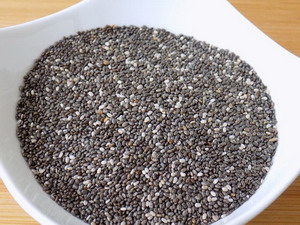 than typically online. I am putting together small 1/4 pound bags for $5. I just bagged up 10 bags of these charming little guys to bring into the office. So, until then. than typically online. I am putting together small 1/4 pound bags for $5. I just bagged up 10 bags of these charming little guys to bring into the office. So, until then.
Take care,
David
Last Wednesday we celebrated Sherry’s birthday by going out to lunch at Black Angus in Citrus Heights. As you c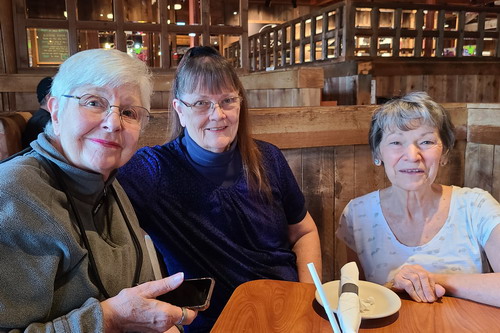 an see Ellen , Sherry, and Susan McDonald were there, but Susie called in sick that day. The girls all had salmon, while I had a steak. Overall a very nice afternoon! an see Ellen , Sherry, and Susan McDonald were there, but Susie called in sick that day. The girls all had salmon, while I had a steak. Overall a very nice afternoon!
|
